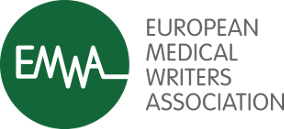Regulatory News - February
The UK leaves the EU
The UK leaves the EU but there will be no change to any pharmacovigilance activities until 31-Dec-2020. The withdrawal agreement was signed by both UK and EU leaders on 24-Jan, and was ratified by EU parliament on 29-Jan. This creates a transition period for the remainder of this year when the UK will essentially still function as though it is a member of the EU even though legally it will no longer be a member. Regulatory submissions and adverse events for the UK should continue to be submitted through the European systems until further notice. Submission of Individual Case Safety Reports (ICSRs) should continue to follow existing reporting modalities outlined in EU legislation. No attempt to send ICSRs to the MHRA Gateway, or ICSR submissions portal during this period should be undertaken as they will not be processed. The MHRA will continue to receive relevant ICSRs via EU systems. Further details are available here.
Overview of EMA’s key recommendations in 2019 on authorisation and safety monitoring of medicines
EMA has published today an overview of its key recommendations in 2019 on the authorisation and safety monitoring of medicines for human use. Innovative medicines are essential to advancing public health as they bring new opportunities to treat certain diseases. In 2019, EMA recommended 66 medicines for marketing authorisation. Of these, 30 had a new active substance which had never been authorised in the EU before. The infographic includes a selection of medicines that represent significant progress in their therapeutic areas.
Once a medicine is authorised by the European Commission and prescribed to patients, EMA and the EU Member States continuously monitor its quality and benefit-risk balance and take regulatory action when needed. Measures can include a change to the product information, the suspension or withdrawal of a medicine, or a recall of a limited number of batches. An overview of some of the most notable recommendations is also included in the document.
Report on pharmacovigilance tasks from EU Member States and the European Medicines Agency (EMA), 2015-2018.
This multi-annual report on pharmacovigilance in the EU summarises the work carried out over the last 4 years by the EU pharmacovigilance network. The network is the cooperative structure formed by the EU Member States and the European Medicines Agency EMA, working in partnership with each other and the European Commission, to support the safe and effective use of medicines in the EU. The report is based on data covering the period from January 2015 to December 2018. As well as summarising the extent of the activities carried out during the reporting period, it discusses some initial outcomes of the 2012 pharmacovigilance legislation, viewed in terms of public health, improvement and simplification of the system, and effects on transparency and stakeholder engagement.
Review published: “Improving the Safety of Medicines in the European Union: From Signals to Action”.
Authors: Joanne Potts, Georgy Genov, Andrej Segec, June Raine, Sabine Straus, Peter Arlett. Clinical Pharmacology and Therapeutics, accepted: October 13, 2019. Abstract: Pharmacovigilance and risk minimization must be planned during drug development and forms a critical part of the regulator's decision on whether a medicinal product can be authorized. Pharmacovigilance systems should ensure proactive monitoring of all authorized medicines throughout their lifecycle in clinical use. Signal detection and management are core activities in pharmacovigilance, rapidly delivering new information on the safety of medicines in real‐world use which helps to fill knowledge gaps. The first 6 years of the European Union (EU) signal management system resulted in 453 recommendations issued by the Pharmacovigilance Risk Assessment Committee (PRAC), of which more than half were for drug labeling changes. The EU pharmacovigilance network has demonstrated its ability to detect and evaluate new drug safety signals. This has resulted in new warnings to guide the safe and effective use of medicines in Europe.
How will pharmacovigilance look in 2030?
Key principles for the use of electronic product information for EU medicines.
Monitoring EudraVigilance: legal basis and updated guidance for pilot phase.
Commission Implementing Regulation (EU) No 520/2012 (article 18) requires EMA, national competent authorities and marketing authorisation holders (MAHs) to continuously monitor the data available in EudraVigilance. It also requires MAHs to inform EMA and national competent authorities of validated signals detected when monitoring the database. On 22 November 2017, EMA launched the new EudraVigilance system and enabled MAH access to the system. During a pilot period which started on 22 February 2018, MAHs of the active substances included in the following list have to monitor them in EudraVigilance and inform EMA and national competent authorities of validated signals with their medicines.
Update: In December 2019, EMA and the European Commission agreed to extend the pilot until the end of 2021 to generate more robust data after reviewing the experience gained in the first year of the pilot. MAHs with active substances included in the list should continue to monitor them in EudraVigilance for the duration of the pilot.

